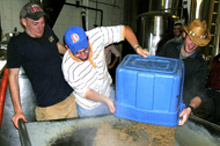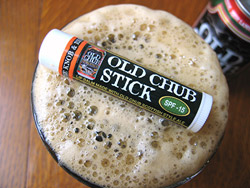MSNBC has a list of the “Top 10 cities for beer lovers,” which was compiled by Shermanstravel.com.
The cities are listed in alphabetical order so Amersterdam is first on the list and Sapporo is last (of the 10, still pretty heady terriroty).
Two American cities earned spots – Portland, Oregon, which is no surprise. And Burlington, Vermont, which is a suprise. Burlington is a delightful beer town and Magic Hat deserves the attention it gets in the story, but where is Vermont Pub & Brewery? After all, founder Greg and Nancy Noonan helped get brewpub legalized in Vermont and its impossible to overestimate how many brewer Noonan has influenced.
We’ll quit nitpicking now and leave it to you to answer questions like “If you were to pick one German city which would it be?” or “If you were to pick on Belgian city which would it be?”

 Colorado State University students got their hands pleasantly dirty when their Brewing Science and Technology class visited
Colorado State University students got their hands pleasantly dirty when their Brewing Science and Technology class visited  Based on research Oskar Blues Brewery in Colorado conducted nobody has ever made lip balm with beer and beer ingredients.
Based on research Oskar Blues Brewery in Colorado conducted nobody has ever made lip balm with beer and beer ingredients.